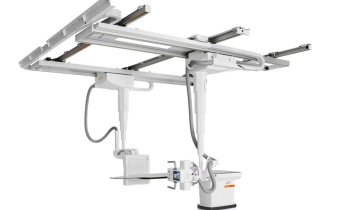News • Biomimetic sight assistance
"Artificial eye" prototype shows great promise
Researchers at the Hong Kong University of Science and Technology (HKUST), the University of California, Berkeley and Lawrence Berkeley National Laboratory are developing an artificial eye with capabilities close to its human model.
The research team published their work on the biomimetic eye in the journal Nature. “Watching sci-fi series such as Star Trek and I, Robot, I thought about making a ‘super human eye’ to be used both in humanoid robots and for the visually challenged,” says Prof. Zhiyong Fan, a professor of Electronic and Computer Engineering at HKUST.

“Whereas the spherical human eyeball is useful for our most important visual sense and for providing a wide field of view, it can hardly be imitated because of its curved surface. Artificial eyes, currently used in hospitals and enabled by flat-surfaced integrated circuit chips, can only imitate part of the human retina to provide blurred vision. In 2012, I came up with the idea to use nanowires and external electronic circuitry to enable high-density sensors on curved surface. The resulting biomimetic eye prototype, with distance among sensing rods minimized to three micrometers, has 30 times more sensors on the artificial retina than the real human eye. This super human eye technology, with high imaging resolution, will be ready for integration into medical robots to take care of patients. It will even cater to the visually impaired when we find suitable bio-compatible materials.”

The main draws of the artificial visual system are its spherical biomimetic design and hemispherical retina made of a high-density perovskite nanowire array which give it superior functionality, including detection of a range of light intensities that closely resemble that of a human eye. Dr. Leilei Gu, a postdoctoral fellow in Prof. Fan’s team, is the first author of the paper. Dr. Gu recalled, “Nature’s editor was so excited about our research that he responded within five days after we first submitted our manuscript. It then took us almost a year to fine-tune our research, redo experiments and re-submit the paper with much enriched content based on their queries. The biggest challenge was to scale down the microns, and that alone took us 10 months working 24/7. After numerous failures and bearing tremendous pressure, our efforts paid off.”
Source: Hong Kong University of Science and Technology
22.05.2020











